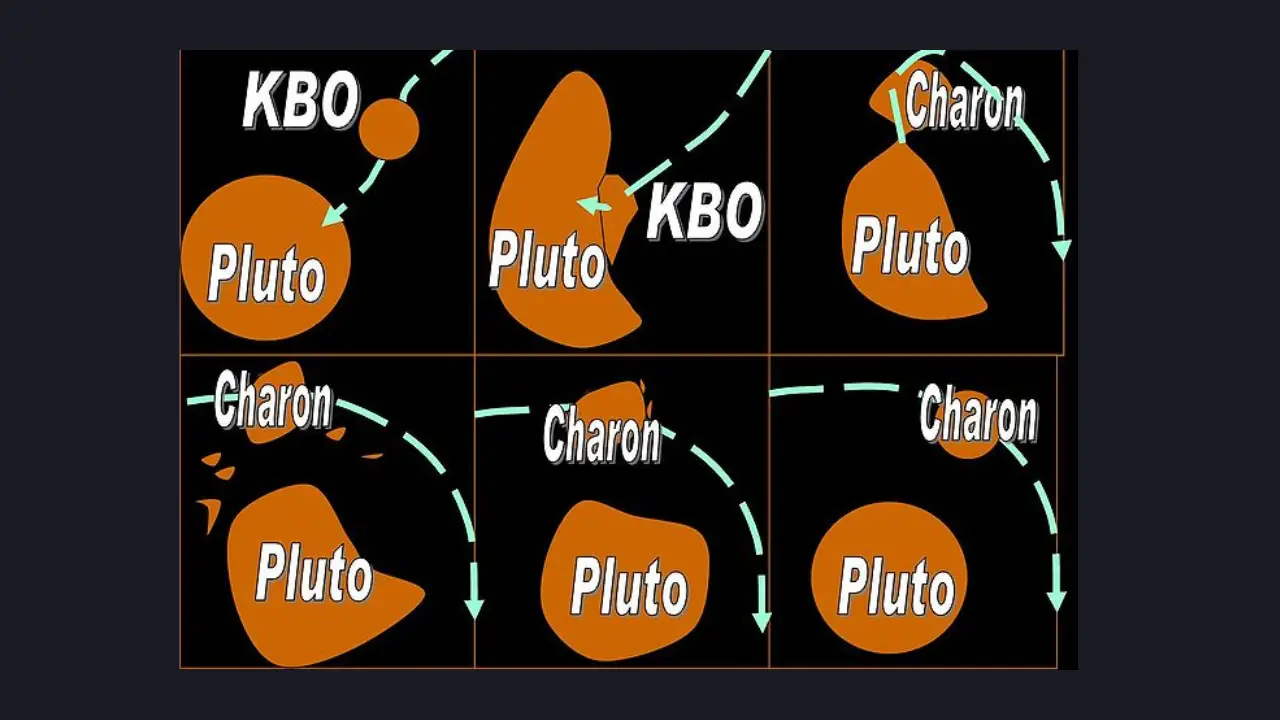The many moons that orbit the gas giants Jupiter and Saturn in our solar system are probably the first thing that comes to mind when discussing the moons that orbit other planets in our solar system. However, even the dwarf planet Pluto, which is found on the periphery of our solar system, has a number of moons orbiting around it. Even though they are relatively unimportant and far away, these moons have captured the interest of both scientists and space fans. This article will discuss the moons of Pluto and go into some interesting facts about each one. We will also discuss the names of the moons.

In 1978, James Christy and Robert Harrington made the discovery that led to the identification of Charon as Pluto’s most famous moon. It has a diameter of around 1,212 kilometers (753 miles), making it the largest of all of Pluto’s moons by a significant margin. When compared to Pluto itself, Charon’s size is notable because it is just around half the diameter of the dwarf planet. Because of this, some scientists have begun to refer to Pluto and Charon as a binary system rather than as a planet and its moon.

The next moon on the agenda is Styx, which is the least massive of all of Pluto’s satellites. Using photographs taken by the Hubble Space Telescope, a group of researchers lead by the astronomer Mark R. Showalter made the discovery in the year 2012. It is believed that the diameter of Styx is roughly 16 kilometers (about 10 miles) and that its orbital period is approximately 20.2 days.

Another noteworthy addition to the list is Pluto’s moon Nix, which was found in 2005 by the same group of astronomers that detected Styx. Nix is approximately 42 kilometers (26 miles) in length and has a shape that can be described as slightly uneven. One complete revolution around Pluto takes about 24.9 days of Earth’s time.
In 2011, the moon Kerberos, which is one of Pluto’s many satellites, was found. It wasn’t until 2015, when the New Horizons spacecraft performed a flyby of the Pluto system, that its existence was established as fact. It is thought that the diameter of Kerberos is roughly 12 kilometers (7.5 miles), making it a relatively small planet. It travels around 59,000 kilometers (36,660 miles) around Pluto throughout its orbit, and it takes approximately 32.1 days for it to complete one orbit.

The third and final member of Pluto’s family of moons is called Hydra, and it was found in the same year as Nix and Charon, in 2005. It has an asymmetrical shape and extends for approximately 34 miles (55 kilometers) in length. Hydra travels an average of 64,800 kilometers (40,230 miles) away from Pluto during its orbit, which lasts for around 38.2 days and has an orbital period of approximately 38.2 days.
There was some thought put into the selection of names for Pluto’s moons. They were deliberately chosen to honor figures from Greek and Roman mythology associated with the underworld, as Pluto is the god of the underworld in Roman mythology. In Greek mythology, Hades is the god of the underworld. According to Greek mythology, Charon serves as the ferryman for Hades, transporting the souls of the deceased over the rivers of the underworld. One of these rivers is known as the Styx, and Nix, Kerberos, and Hydra are all affiliated with the underworld in some way, either as beings or as deities.
The genesis and development of the Pluto system, as well as a more comprehensive comprehension of the outer regions of our solar system, can be better comprehended through the examination of Pluto’s moons. The New Horizons project, which carried out a historic flyby of Pluto in 2015, presented us with a lot of knowledge about this distant and mysterious world, including detailed photographs and data on its moons. Among the material that was provided to us was information regarding Pluto’s moons.
It is feasible that in the future we will find other moons around Pluto. This possibility arises as our understanding of the outer solar system continues to develop. Each time a new object or phenomenon is found, our knowledge of the dynamics and intricacies of these far-off celestial bodies, as well as the fascinating tales that lie within them, expands.
In conclusion, Pluto, the dwarf planet located on the outskirts of our solar system, is home to a number of moons that have intriguing names. Each of this world’s moons and satellites, from the largest moon, Charon, to the smaller satellites Styx, Nix, Kerberos, and Hydra, contributes something new to our comprehension of this faraway and enigmatic place. The discovery of Pluto’s moons enlightens us about the complex mechanisms at work within our solar system and compels us to contemplate the wondrous things that lie beyond our solar system.
![]()
